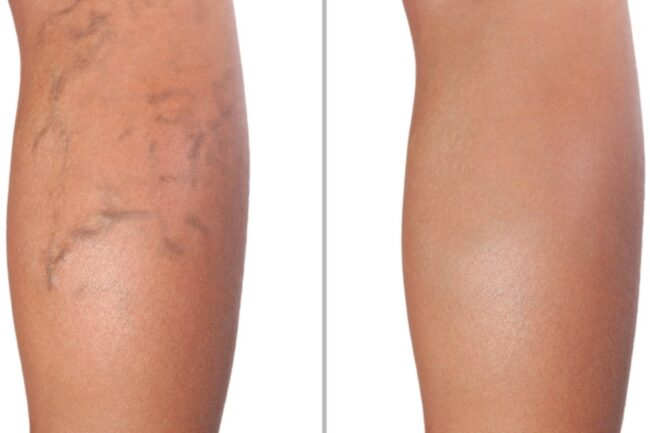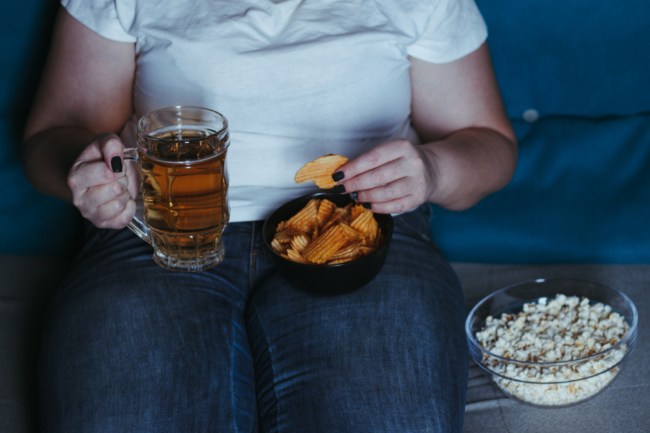Ever wondered “Why are my veins so blue?”
The appearance of your blue veins could be due to a lot of reasons, such as:
- How your eyes process light
- Skin colour or complexion
- Genetics
- Hormones
- Age
- Weight or body mass index (BMI)
- Blood properties
It isn’t uncommon to have noticeable veins, so your blue or green veins shouldn’t be a cause for concern. Additionally, veins can be more prominent due to several lifestyle-related reasons, causing the blood to pool in certain areas of the body.

What can my blue veins be a sign of?
“But, is there another reason behind my blue veins?” Vein pain and discomfort could be a sign of a larger problem beyond cosmetics, like…
- Varicose veins (enlarged, twisted veins often found in the legs and feet)
- Deep vein thrombosis (blood clotting in a deep vein area, usually paired with arteries)
- Superficial venous thrombosis (clotting and inflammation typically found just underneath the skin, in a rope-like appearance)
- Venous ulcers (open sores due to poor circulation in the limbs)
- Chronic venous insufficiency (sudden swelling and change in the vein colour due to blood pooling. If left unaddressed, this condition may develop into lymphedema)
- Lymphedema (swelling commonly in the arms and legs due to poor lymphatic fluid drainage)
Check your lifestyle habits

Some of these issues, along with your blue or green veins, can be driven or worsened by lifestyle factors which include:
- Prolonged sitting or standing. When you engage in long periods of low activity, your blood flow slows, and your body is unable to properly circulate blood. If you engage in long hours of low physical activity or work in professions like these, move your body every once in a while, whether that’s through a quick walk or a stretch.
- Strenuous activity increases blood pressure, causing swelling in the muscles. This process, also known as filtration, pushes the veins to the surface of the skin, thus making them more noticeable.
- Alcohol consumption. When consuming excessive amounts of alcohol, your heart rate and blood pressure increase as the body works harder in pumping blood. This leads to a tightening of the vein valves, making it difficult to pump blood upward. While alcohol doesn’t necessarily directly affect varicose veins, excessive alcohol consumption can lead to various health issues, so be sure to drink in moderation.
- Smoking. Nicotine and carbon monoxide intake directly impacts the lining of the veins, causing them to constrict, hinder blood, and by extension, oxygen and nutrient delivery. As a whole, smoking poses significant risks to your body, including your veins and arteries as part of the entire vascular system. Studies also show that vaping, even without nicotine, can impair one’s blood vessel function.
- Other health conditions. These can include chronic constipation, blood clots, certain tumours, and hormonal imbalance, to name a few.
Look out for the symptoms of your blue veins
Now, you might be asking: when is the right time to get your blue (or green) veins checked? Here are the signs you should watch out for:
- Bulging veins
- Heaviness, cramping, or a throbbing or burning sensation in the legs
- Itching around the veins area
- Skin discolouration
- Swelling in the feet and ankles
Seek professional advice
If you have blue or green veins and are experiencing any of these symptoms, there could be an underlying issue requiring medical attention. It’s best to get yourself checked by a medical professional.
At The Vein Institute, our mission is to provide our patients with the best possible results through a positive treatment experience. Our highly skilled team of doctors, led by our founder Dr Zil Yassine, aided by the latest technologies, provide our patients with non-surgical treatment options that offer pain and symptom management.
Schedule your appointment in any one of our locations or call us at 13 VEINS (that’s 13 83467) to get in touch.
See more facts about veins: Answering Your Vein FAQs
